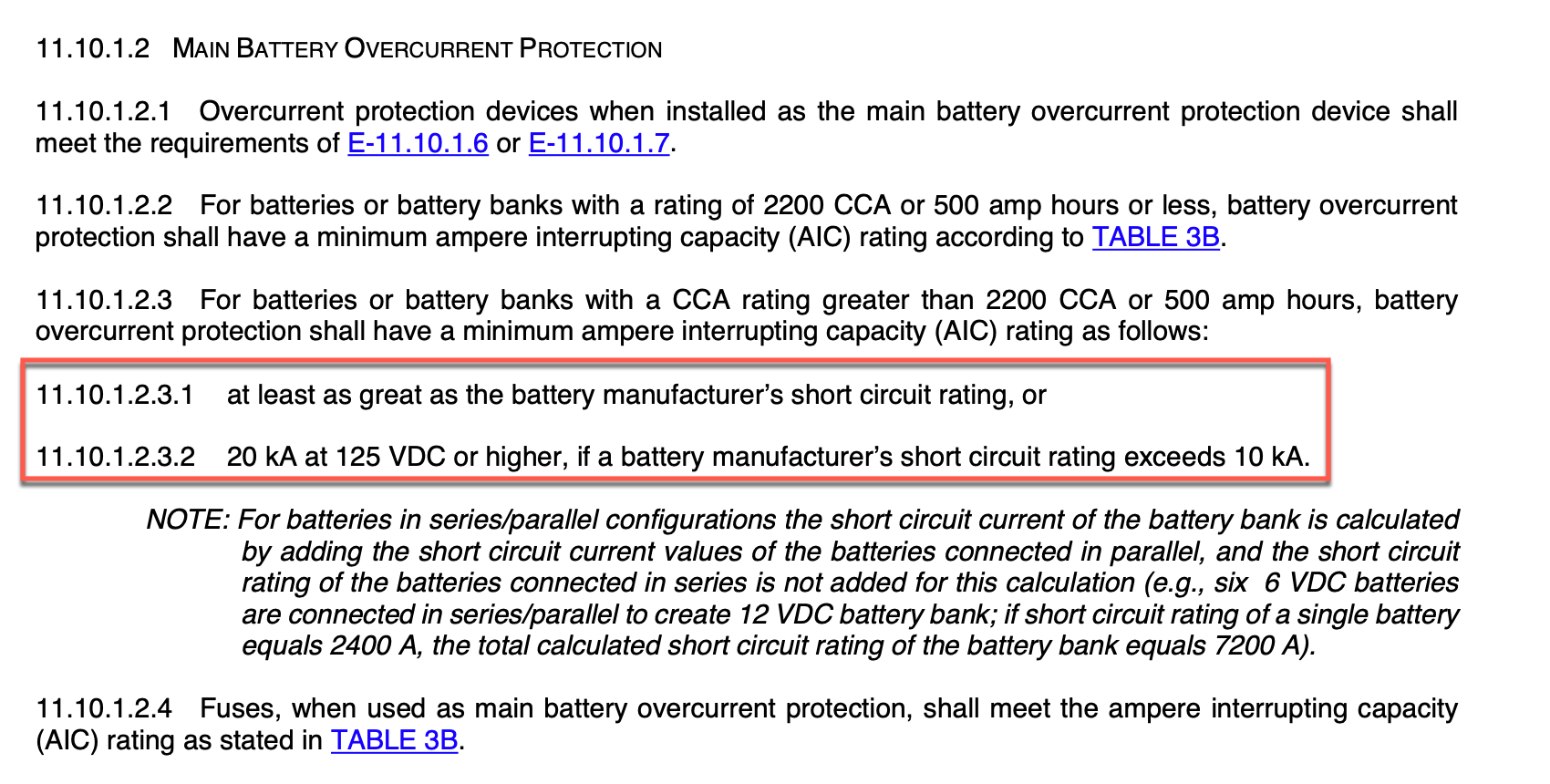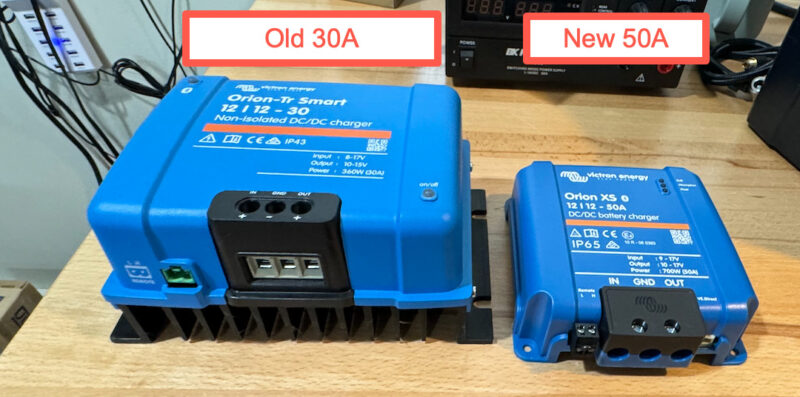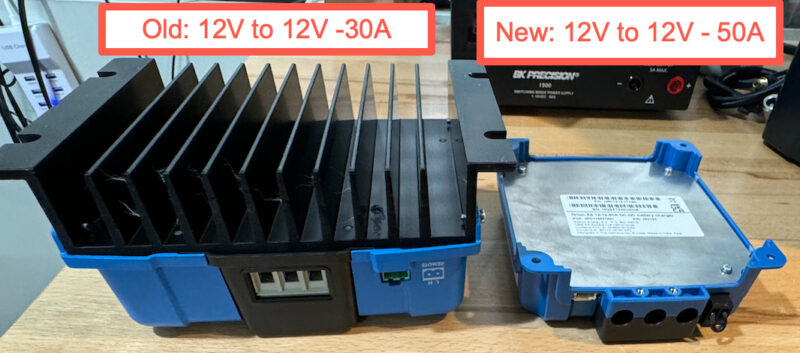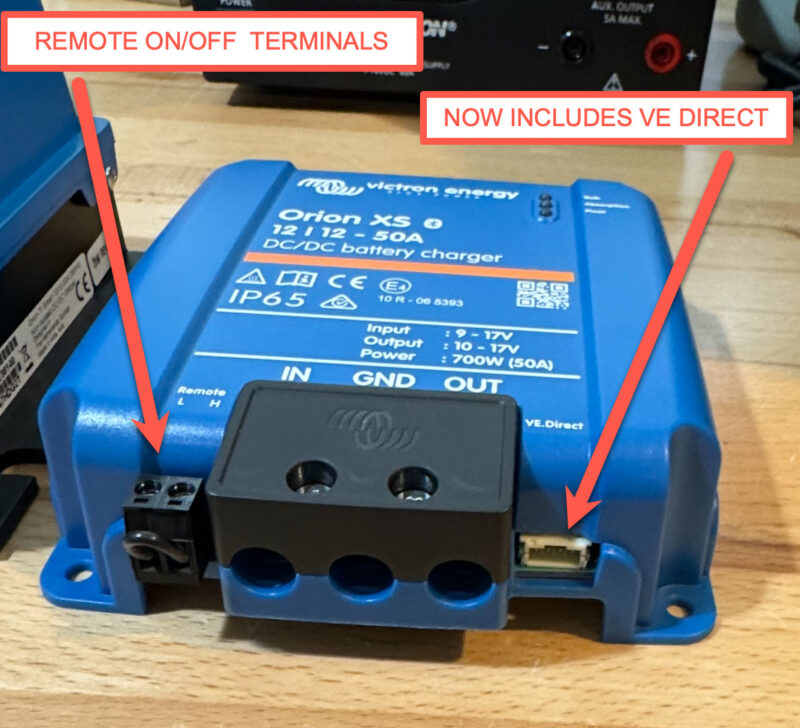Easy LiFePo4 Conversion
Before reading this article please read the 101 article on Drop-In’s:
Drop-In Batteries Be An Educated Consumer
Hardly a day goes by where we don’t see or hear folks lamenting they’re sticking with Lead Acid, because LiFePo4 (LFP) is “just too complicated”. With a few simple components an LFP conversion is very easy for the 25-40′ cruising boat. The components necessary for an easy LFP conversion are:
1 – LFP House battery bank with Bluetooth BMS
2 – Blue Sea Systems Dual-Circuit Battery switch
3 – Victron XS-50 DC to DC Charger
4- Class T Fuse
5- Battery cable, lugs, busbar, heat shrink etc…
IMPORTANT:This drawing is the foundation level only. Solar, wind, shore charger, inverter/charger fuel cell, hydro generator etc. all tie into the house bank positive bus.
The XS-50 switches & class T can be purchased at our affiliate partner:
Buy a Victron XS-50 – Bay Marine Supply
Step 1 Replace the 1/2/B Switch:
The conversion could not be easier. Remove your 1/2/B battery switch, if so equipped, and replace it with a Blue Sea Systems 5510e dual circuit switch or a Blue Sea Systems 5511e. If your LFP bank is not designed for starting use the 5510e. If your LFP bank is large enough to be used, in an emergency, to start the motor you can install the 5511e, which includes an emergency COMBINE position. This switch creates two banks START & HOUSE that are fully isolated from each other. No more fiddling with a 1/2/B switch just an easy ON/OFF.

We have created a Store front with busbars and accessories you will need for this project. The busbars recommended I have personally used & tested. Amazon is perfect for accessories but not for products like Victron that may require tech support. Please support MHT by purchasing from our Affiliate Partners.
Buy Easy LFP Conversion Products – Amazon
Step 2 Mount the House Bank & Class T Fuse
Measure twice Mount once. With LFP batteries being lighter & smaller you can easily install significantly more usable Ah capacity in the same space where the lead acid batteries resided. Because LFP batteries can deliver insane amounts of short circuit current a Class T-fuse should be used to protect the vessel, as they are one of the only fuses with a 20,000A AIC rating..
Rod, My battery already has short-circuit protection?
Unfortunately, neither UL nor the ABYC condsider a BMS as an over-current protection device. When they say “at least as great as battery maufacturer’s short-circuit rating.” This means the short-circuit rating of the cells. It assumes the BMS is not there. Sadly, I do not know of a single LFP cell manufacturer that publishes this data. Some lead acid manufacturers do and a single AGM battery can throw 5000A into a dead short. Bottom line, use a Class T to for main bank protection to avoid any issues when it comes to insurance surveys.
Step 3 Install the Victron XS-50 DC to DC charger
The New Orion XS-50 can be purchased at our affiliate partner:
Buy An XS-50- Bay Marine Supply
The new XS-50 from Victron is a HUGE leap forward compared to its predecessor. The older Orion series series used a much less efficient switching power supply design. As such, it required massive heat sinks and a massive size. Despite the size and huge heat sink the still ran quite hot. With the XS 50, Victron did what they do best, and listened to their dealers and installers. By listening they went back to the drawing board used a much, much more efficient power supply design.This made the new XS-50 considerably smaller and removed the need for massive external heat sinking as they used as special aluminum PCB material..
Victron also added a VE Direct port, another item dealers/installers were asking for. On top of that they added the ability to custom program input and output current in o .1A increments. The new XS-50 is AMAZING!
We recommend turning on the XS-50 via engine ignition incase the start batt charger is smaller than 50A.
Why use a DC to Dc charger?
1- Stock alts have one voltage setting and it is rarely correct for your LFP batteries.
2- Stock alts can and do burn themselves up charging LFP batteries. (I won’t bore you with pictures)
3- A DC-DC charger can handle a BMS disconnect, your alternator *cannot (*without additional equipment).
About the Design
In this design the stock alt remains connected to the lead acid starting battery keeping the installation super easy. I was going to write this article two years ago but I was not happy with the predecessor to the new XS-50. The original Orion TR Smart series ran quite hot and lacked in some areas specifically input /output limiting. A massive benefit to the new XS-50 is the fact you can set both the input and output current as well as well as run them in parallel if you have a large factory alternator.
DC-DC chargers should be set to draw no more than 50% of the alts rated output:
If your stock alt is:
100A – XS-50 is a perfect fit
80A – Set it to 40A
50A Set it to 25A
etc.
The Easy LFP System:
This drawing keeps it simple. An LFP house bank, a lead acid start bank, dual circuit plus switch and a DC to DC charger. Simple cost effective and easy to install & wire.
In this drawing we show an Epoch Battery because they easily represent the highest quality to value ratio of any LFP battery suitable for a cruising boat. If you use the Epoch 12V 460Ah, as shown, it has a built in fuse with a 50,000A AIC rating so the class T is not needed and an MRBF can be placed right on batt +.
An excellent option for the Always/On/Charge bus is the Blue Sea 5196 MRBF common source fuse holder.

Step 4 Choose Your LFP batteries
We believe Epoch batteries currently represent the best value to quality ratio of any LFP batteries currently on the market and as such Epoch has offered our readers a 10% discount.
EPOCH Battery 10% DISCOUNT:
We have secured a 10% Epoch discount for MHT readers. The Coupon code is: MARINEHOWTO
It can only be used via the link below!
Buy Epoch Batteries- Epoch Batteries
The EASY LFP system =
1-ABYC compliant
2- Protects the Factory Alternator
3- Affordable
4- EASY!
Rod, Why do you show a deep cycle battery as the engine starting batt?
Easy, LFP batteries basically use a computer to keep the battery working. Computers can have glitches. By using a deep-cycle battery as the Start/Reserve battery, the day you need to rely on it, you won’t murder the battery by deep-cycling it. We began employing this design strategy in the mid 90’s on world cruising boats and more than once it has proven invaluable in saving the vessel.
Ignore the myth and lore that deep-cycle batteries can’t be used for starting engines. It is just that myth & lore.. (grin) In order to use the start/reserve battery in an emergency you will need to use the 5511e switch with Emergency COMBINE.
Important: If you don’t know why the house bank went down pull the house bank fuse fuse before turning the switch to combine.
Trojan knows deep-cycle batts! Heck My brother & I have been using used deep-cycle marine batteries to start our massive CAT excavation equipment for 10+ years and they tend to outlast the starting batts by a wide margin. Why because the are a more robust construction..
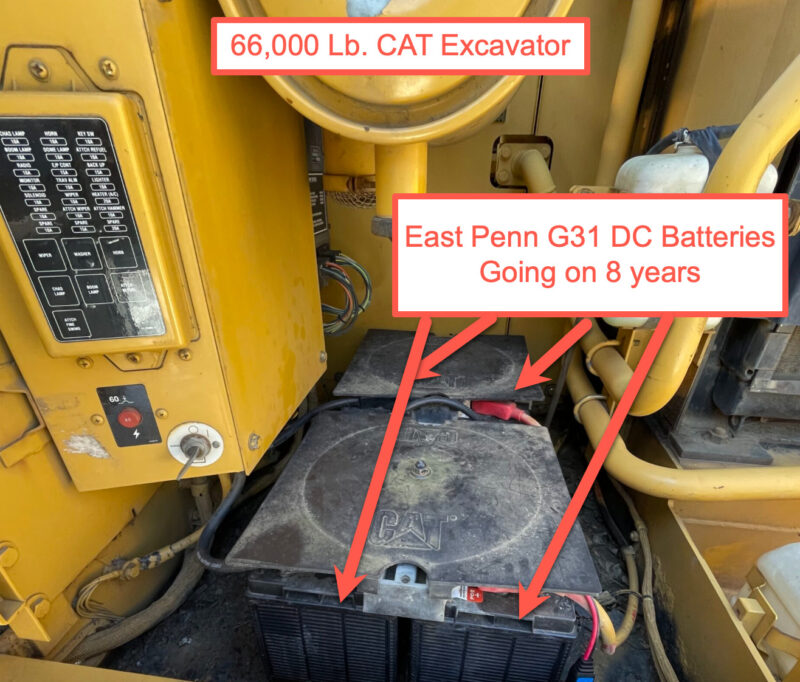
Good Luck & happy boating!
Like What You Saw Or Read?
Would you like to see more articles like this? Is so feel free to donate, support the site and keep it growing.
Please DO NOT feel obligated at all. If you like it and want to make a small donation than that’s all I ask.
Your donations help keep the content coming and also help keep it free.
Click the DONATE button below if you would like to make a donation via PayPal.


